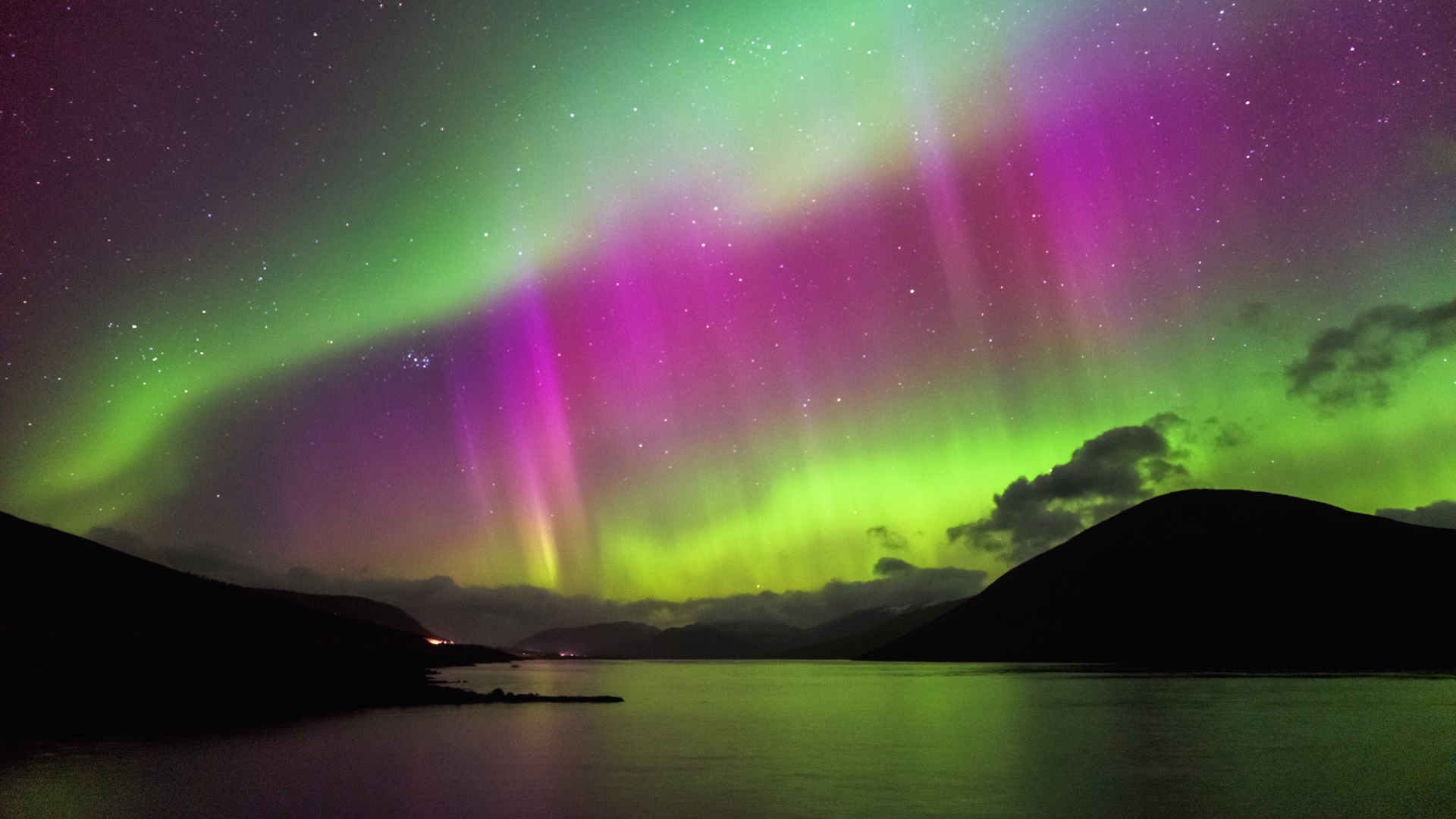Auroras predicted over US this weekend as solar storm rips toward Earth
A solar explosion called a coronal mass ejection is poised to graze Earth on Friday or Saturday (Jan. 24 or Jan. 25), potentially triggering colorful auroras over the northern U.S.

A powerful solar outburst is predicted to graze Earth this weekend, potentially triggering power grid disruptions and making colorful auroras visible from much of the northern U.S.
The outburst, known as a coronal mass ejection (CME), erupted from the sun on Jan. 21 and is forecast to strike Earth's magnetic field late Friday night (Jan. 24) or early Saturday morning (Jan. 25), according to the National Oceanic and Atmospheric Administration's (NOAA) Space Weather Prediction Center.
The impact could trigger a minor G1-class geomagnetic storm — a temporary disruption to Earth's magnetic field that can result in radio blackouts, power grid fluctuations, satellite malfunctions and other adverse effects. G1 events are the weakest class of geomagnetic storms and typically pass unnoticed by the vast majority of people.
However, every geomagnetic storm has the chance to push the northern lights to much lower latitudes than normal, potentially making the colorful skylights visible to millions of skywatchers in North America. If the solar storm hits this weekend, auroras could be visible in much of the northern U.S., including in northern Michigan and Maine, according to the NOAA aurora forecast.
Related: The 10 best stargazing events of 2025
Auroras occur when charged particles from the sun collide with Earth's magnetic field, or magnetosphere. These particles skate along our planet's magnetic-field lines toward the North and South poles, striking atmospheric molecules along the way. Those molecules then become energized, emitting energy in the form of colorful light. The color of auroral light depends on the type of molecules being energized, which is also linked to their altitude in the atmosphere.
To see an aurora near you, get as far away from artificial light sources as possible, using a dark-sky map if necessary. Let your eyes adjust to the darkness; then simply look up. You don't need stargazing binoculars or a powerful backyard telescope to see auroras, but the colors can appear brighter and crisper when viewed through a smartphone screen. That's because these devices are more sensitive to light than the human eye is, essentially letting more light in with a larger aperture.
Get the world’s most fascinating discoveries delivered straight to your inbox.
If you don't catch this weekend's auroras, don't fret; all forms of solar weather, including CMEs and the resulting geomagnetic storms, happen more frequently during the peak of the sun's 11-year activity cycle, known as solar maximum. Our star has just entered this phase of its current cycle, astronomers announced in October 2024, and several years of heightened solar activity are likely to follow.

Brandon is the space / physics editor at Live Science. With more than 20 years of editorial experience, his writing has appeared in The Washington Post, Reader's Digest, CBS.com, the Richard Dawkins Foundation website and other outlets. He holds a bachelor's degree in creative writing from the University of Arizona, with minors in journalism and media arts. His interests include black holes, asteroids and comets, and the search for extraterrestrial life.


